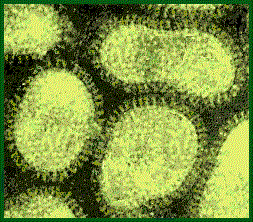|
Influenza
(continued...)The flu virus was first isolated from chickens in 1901, but it was recognized as so until 1955. The flu virus was also isolated from runny pig snouts in 1931. This virus became know as "swine flu"
There are three main types of influenza simply named A, B, C. Influenza A is the most common was discovered in 1933. Influenza B was discovered in 1940 and influenza C in 1947. Variants of these basic types are named after the place it first strikes. For example, there is the Hong Kong (B), New Jersey (A), and Bangkok (A). Influenza A has also undergone two antigenic shifts since 1918 in 1957 and 1968.
In 1976, Ford signed a $135 million immunization campaign against the swine flu in fear that the 1918 epidemic was back. In the end, it reached only a quarter of the U.S. population. However, it also happened that Guillain-Barri syndrome, which is a type of rare paralysis, appeared ten times as much in vaccinees. The government eventually paid out another $93 million in damages, putting a permanent crimp in American pharmaceutical industry's eagerness for making any vaccines.

|
|
| .. Next page |